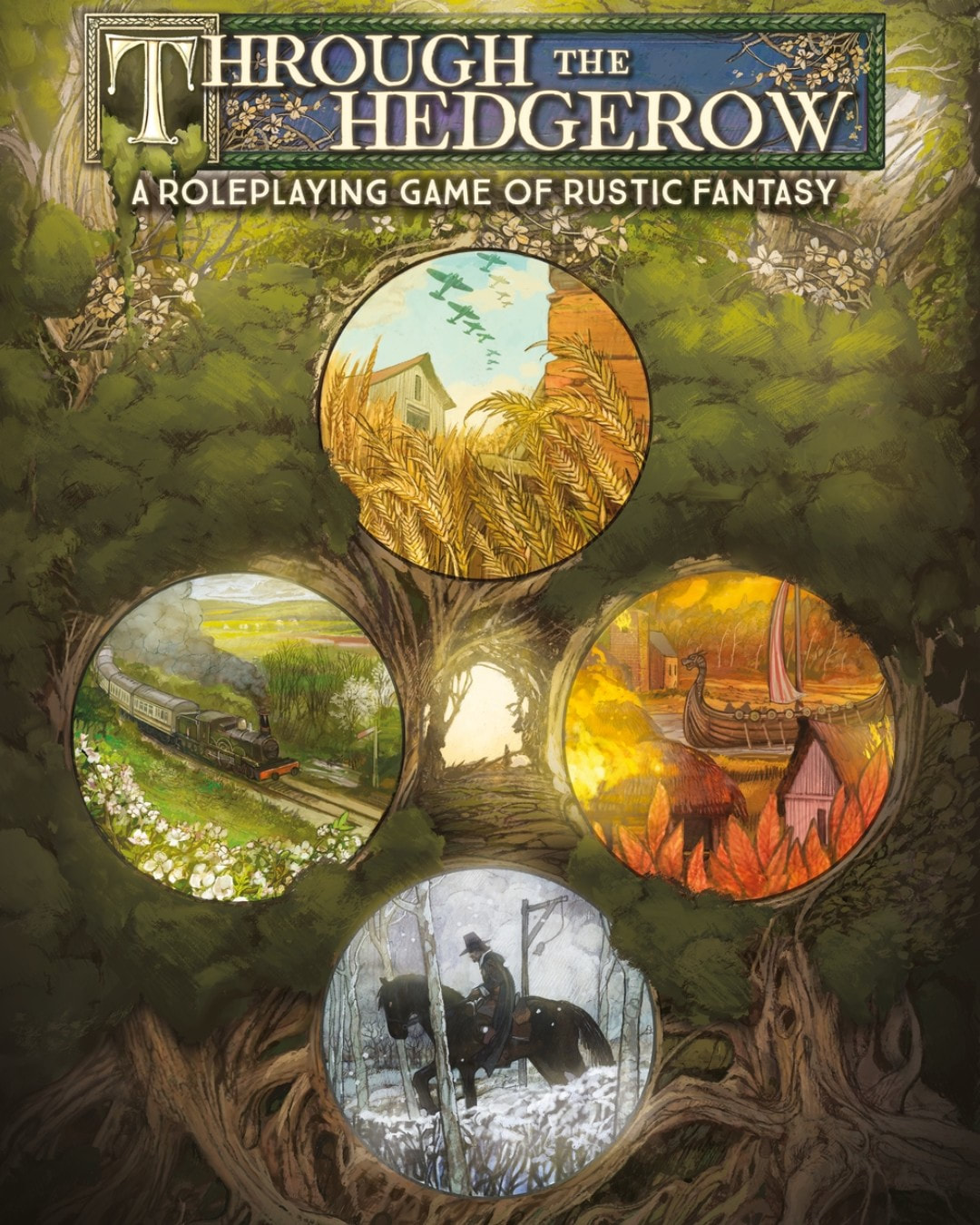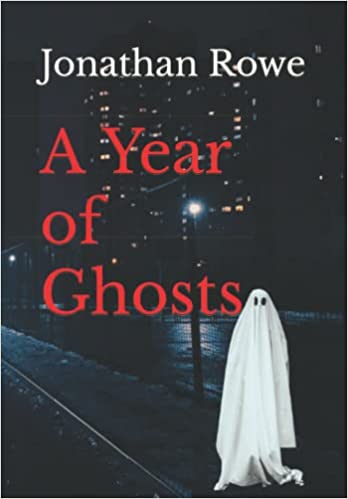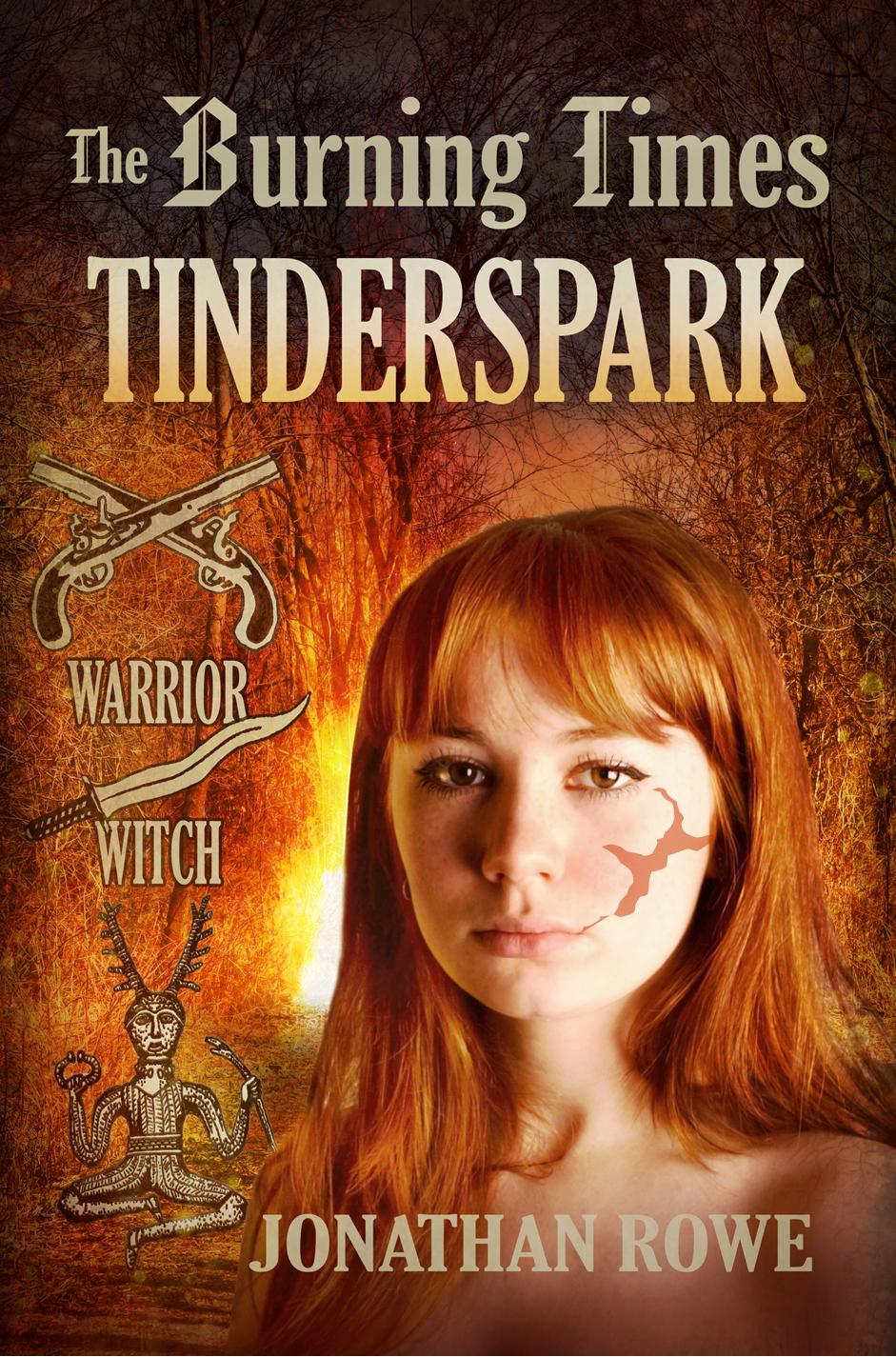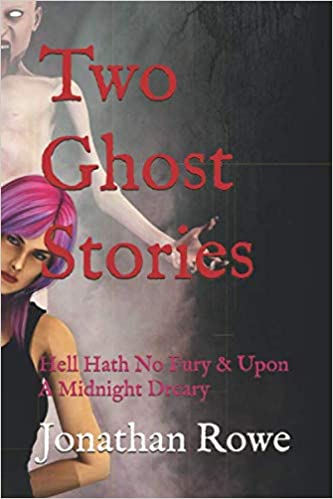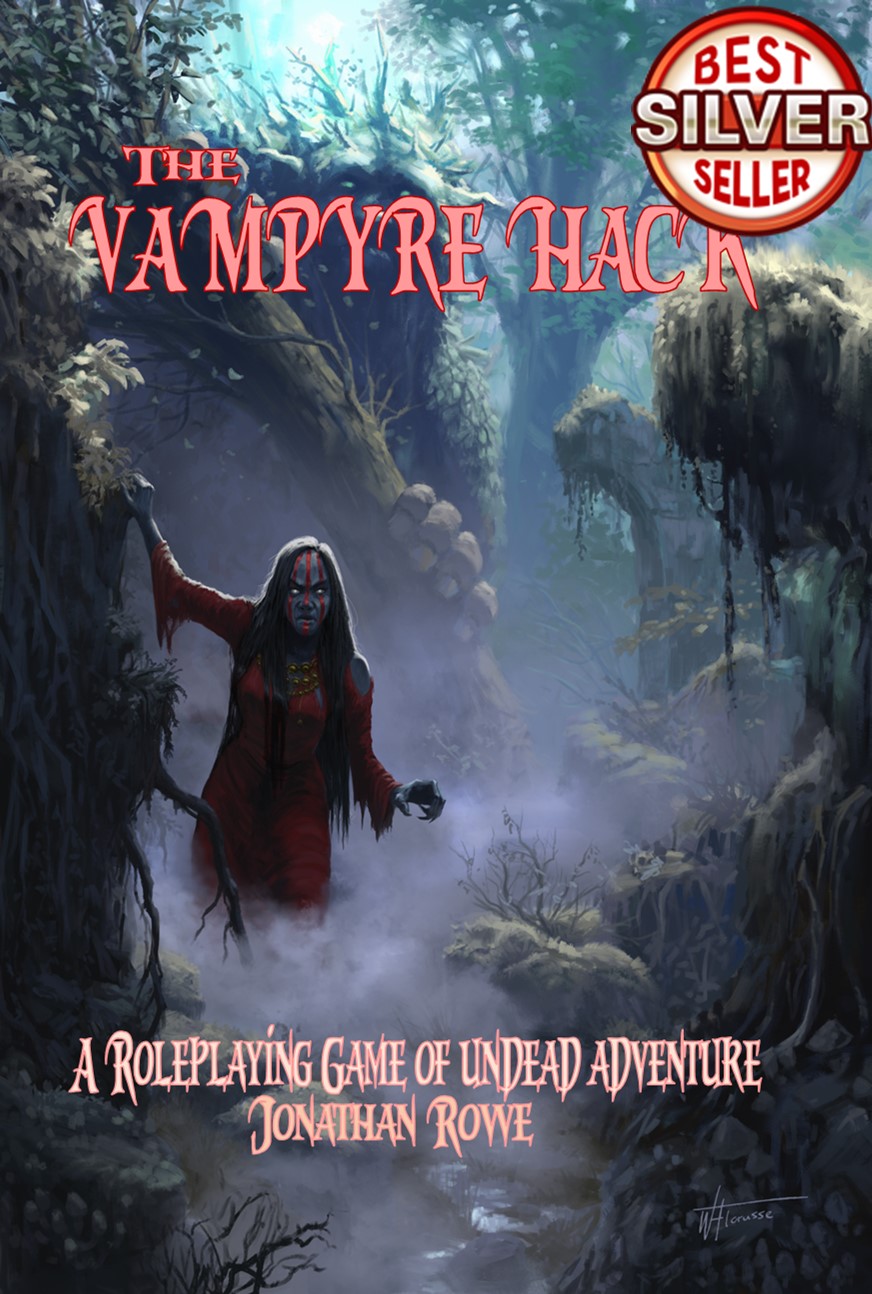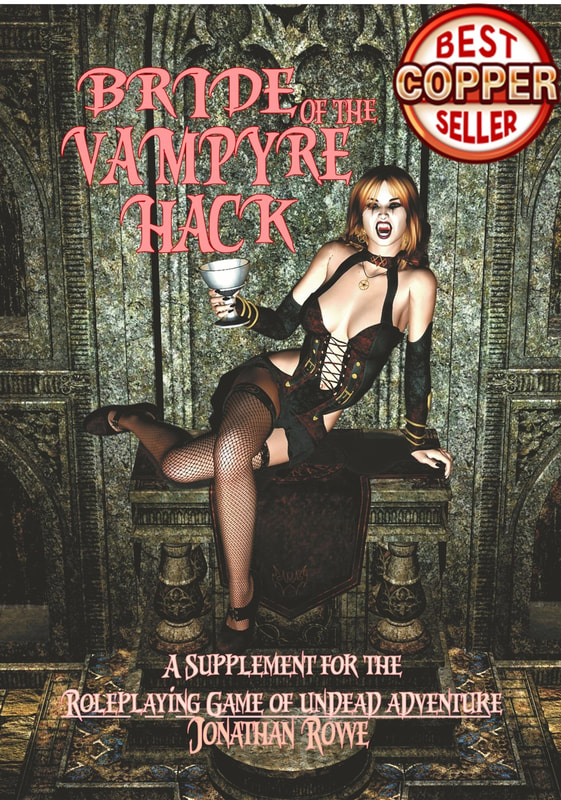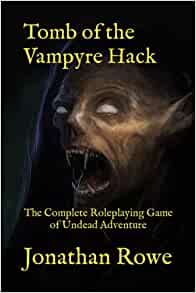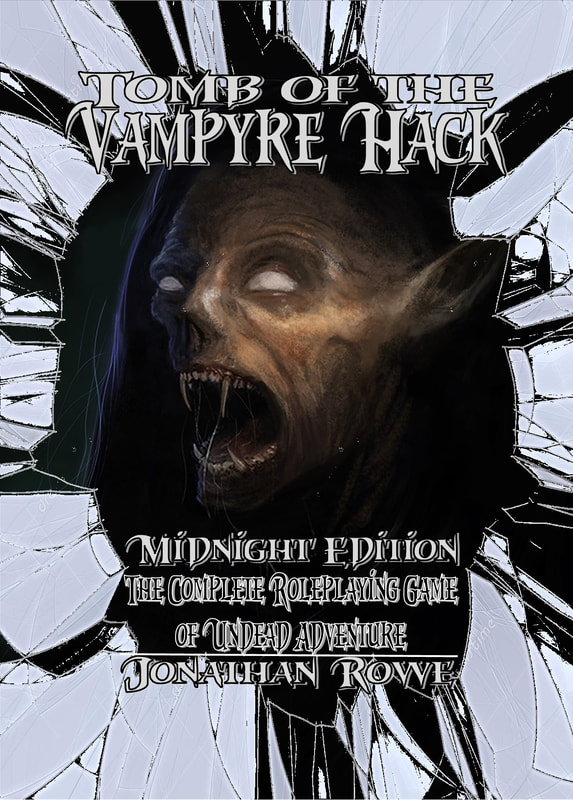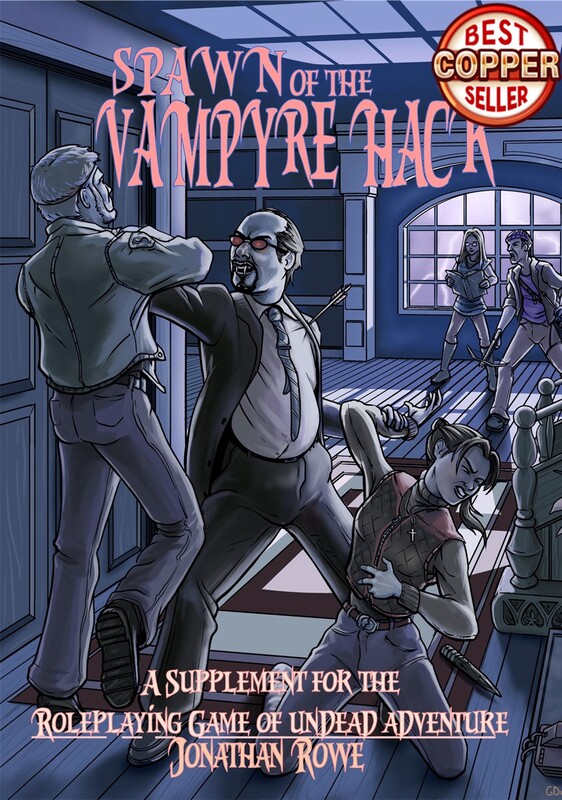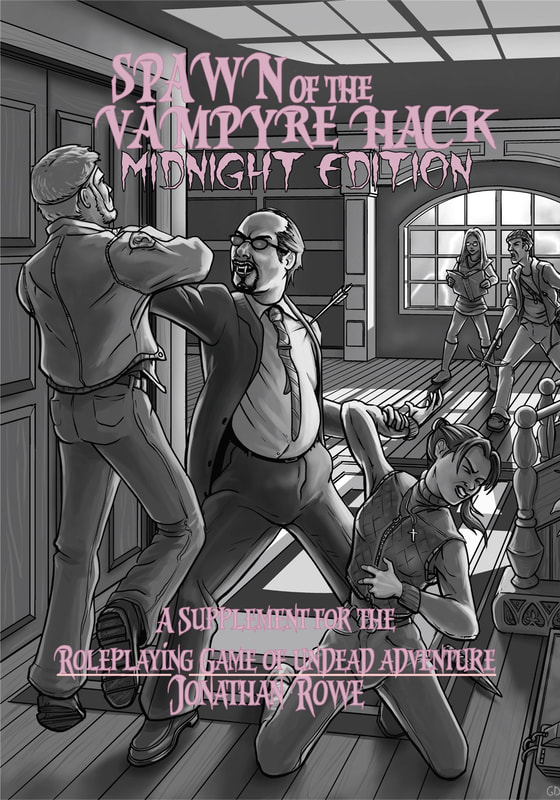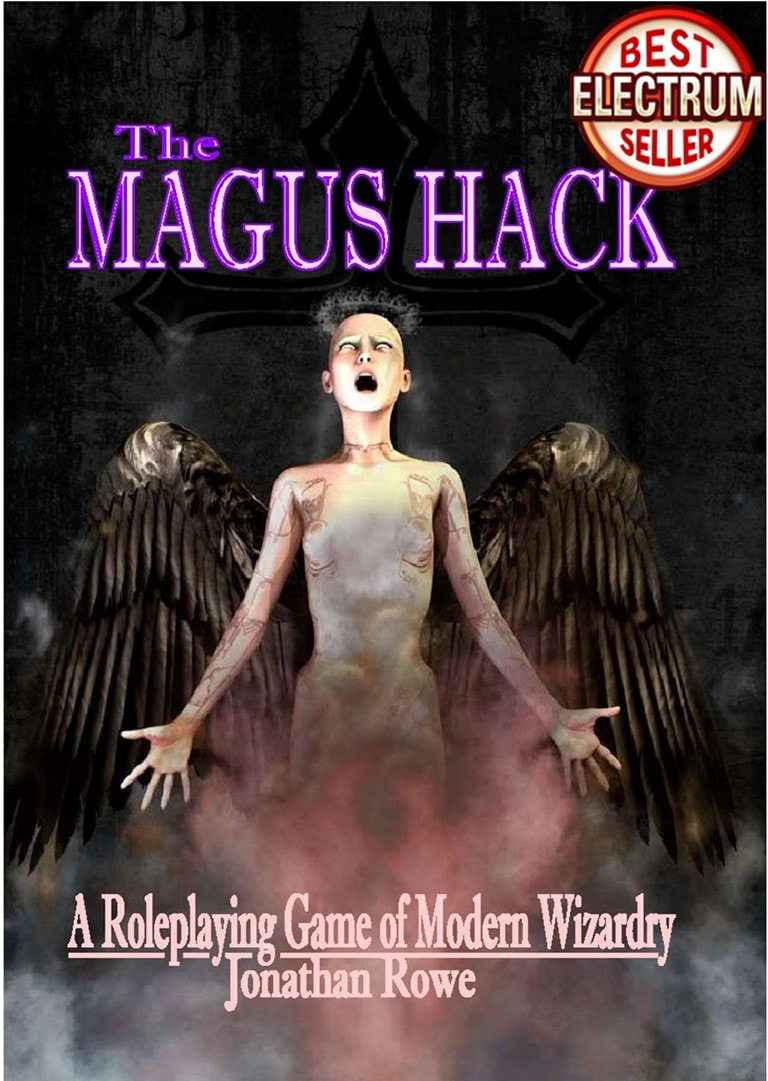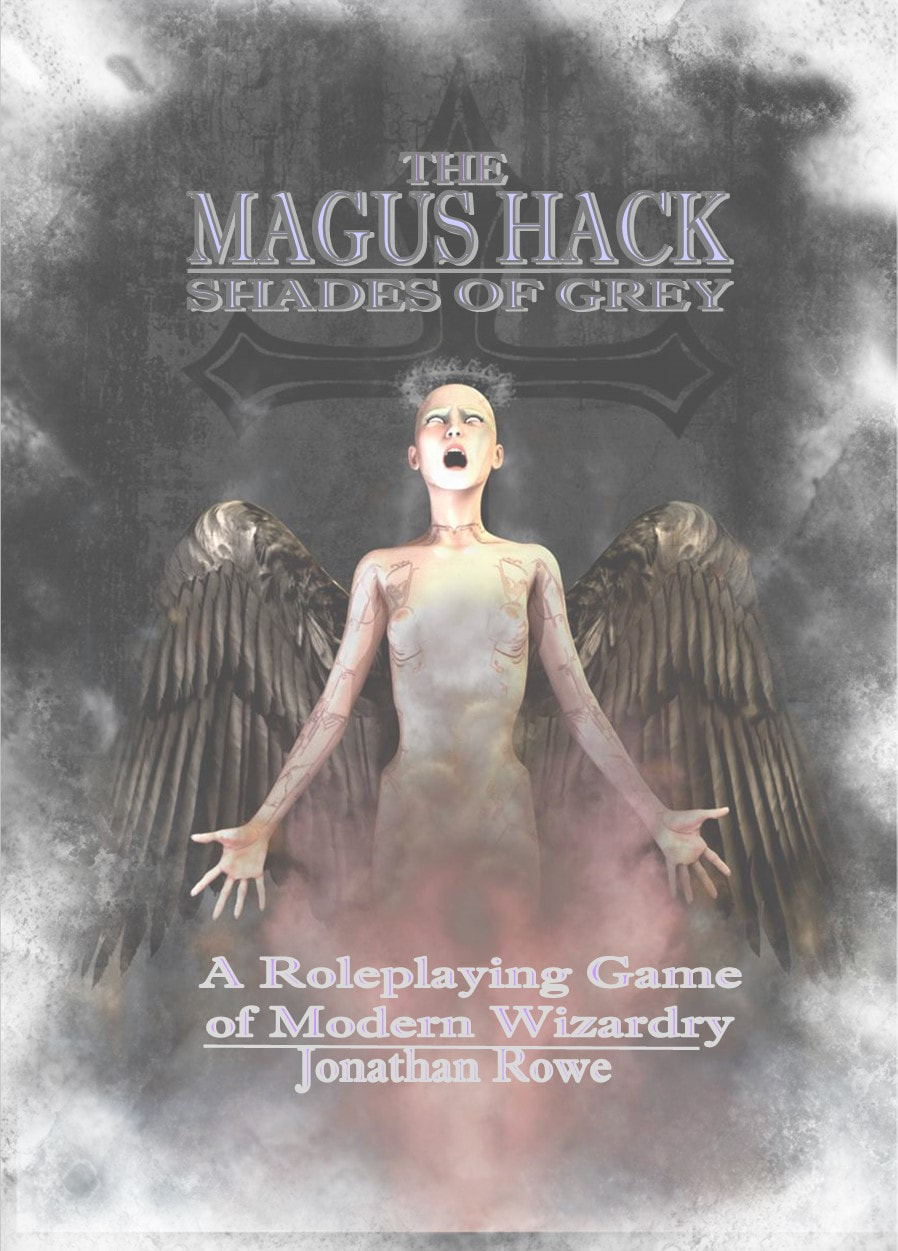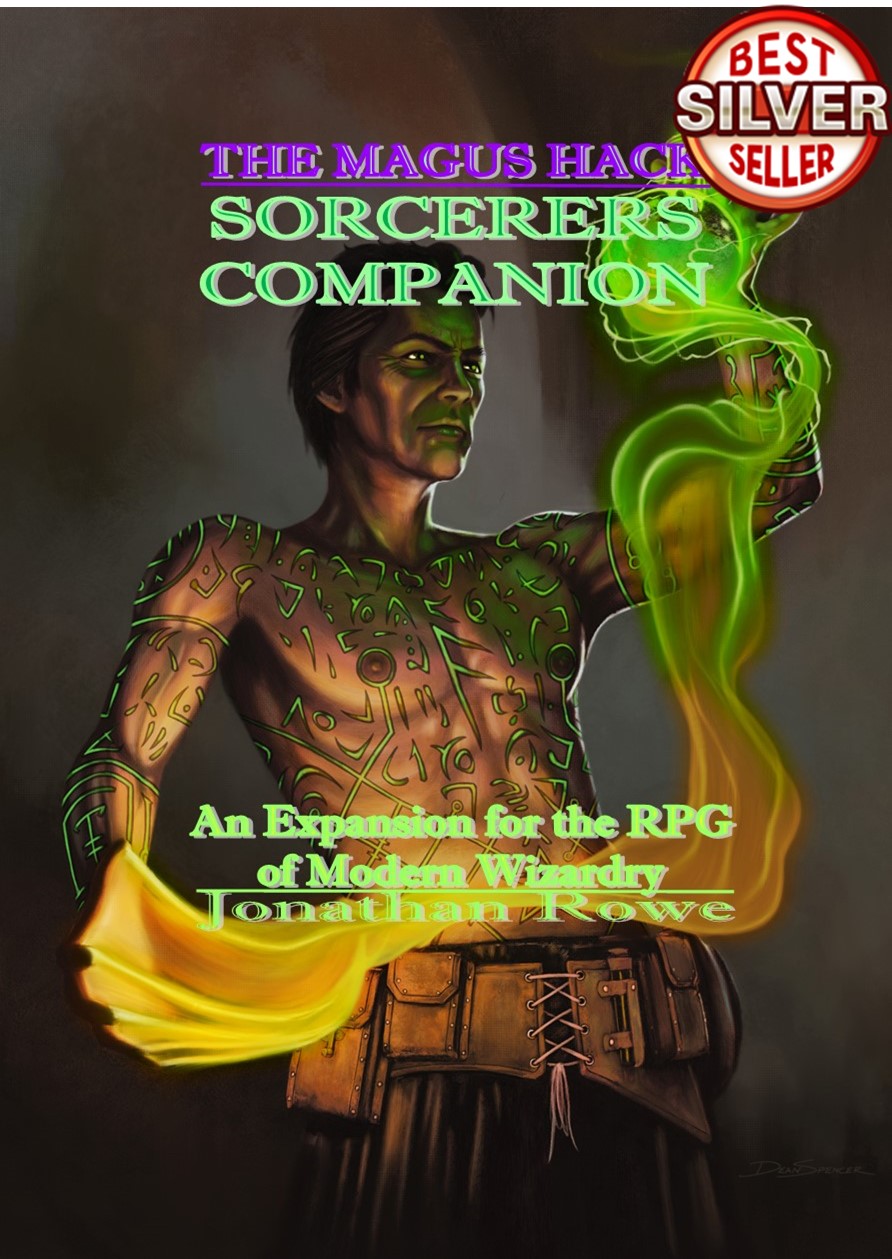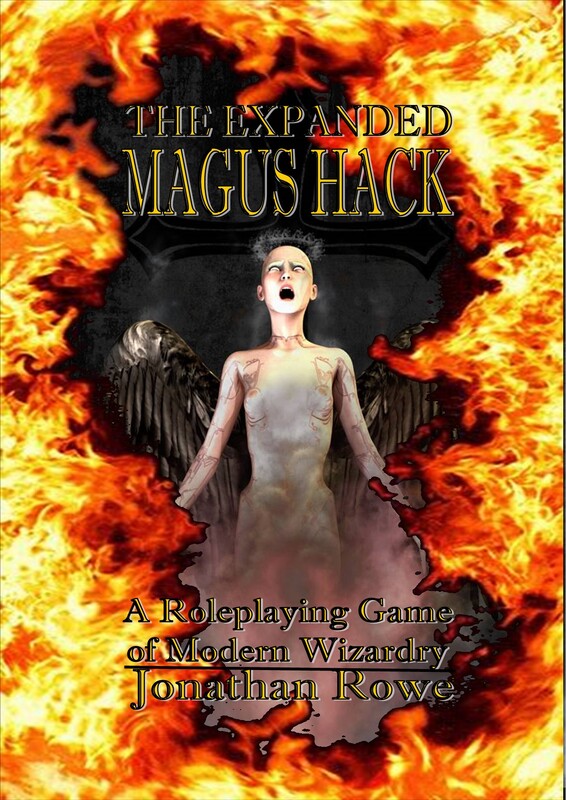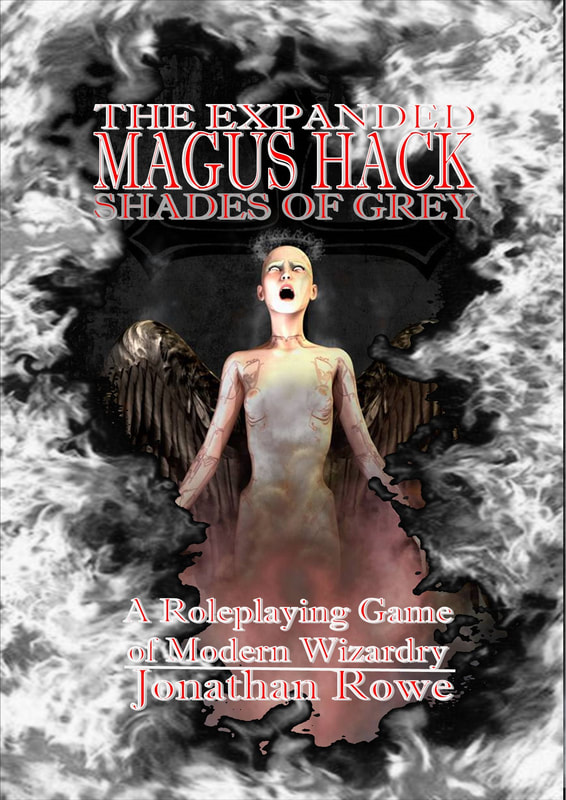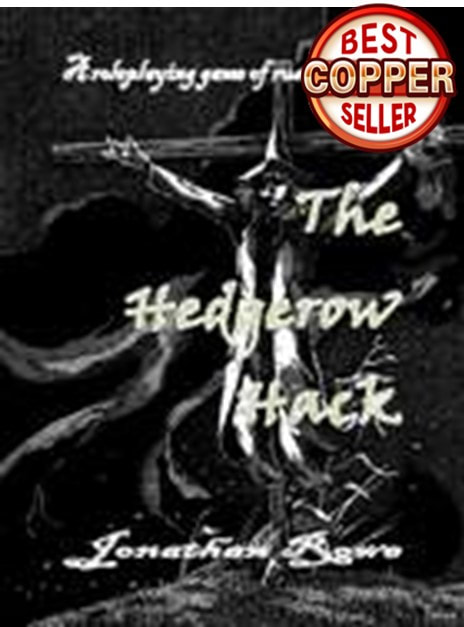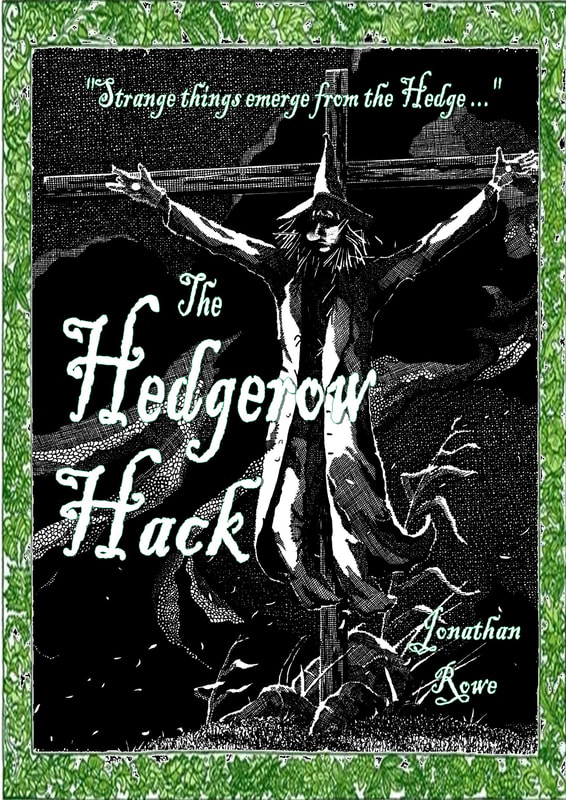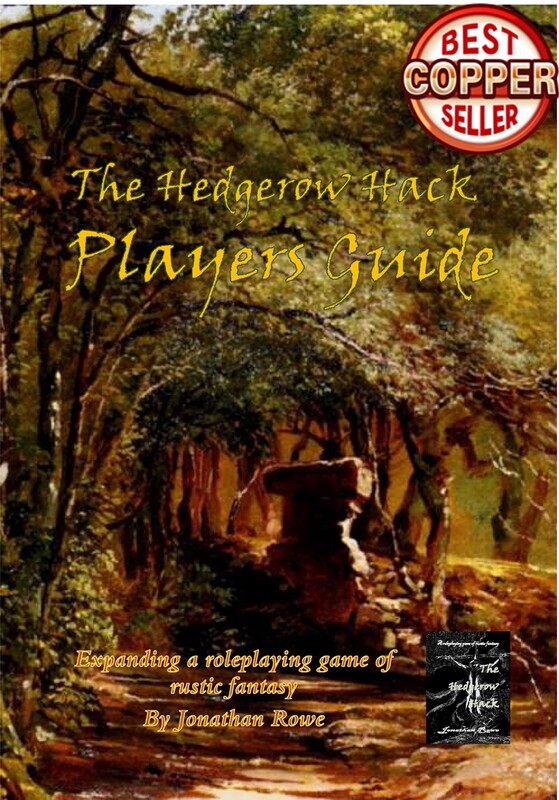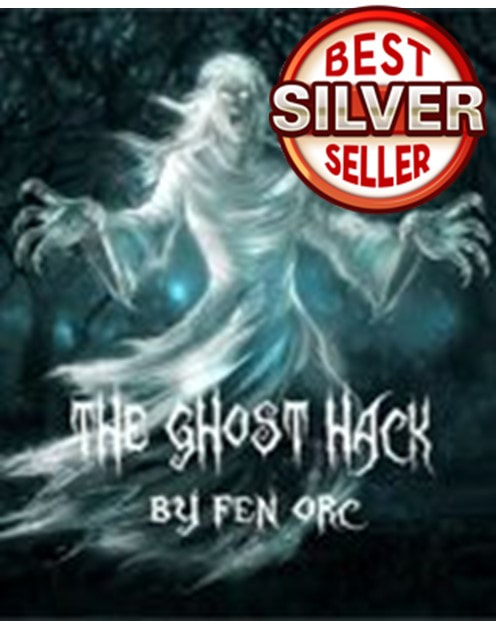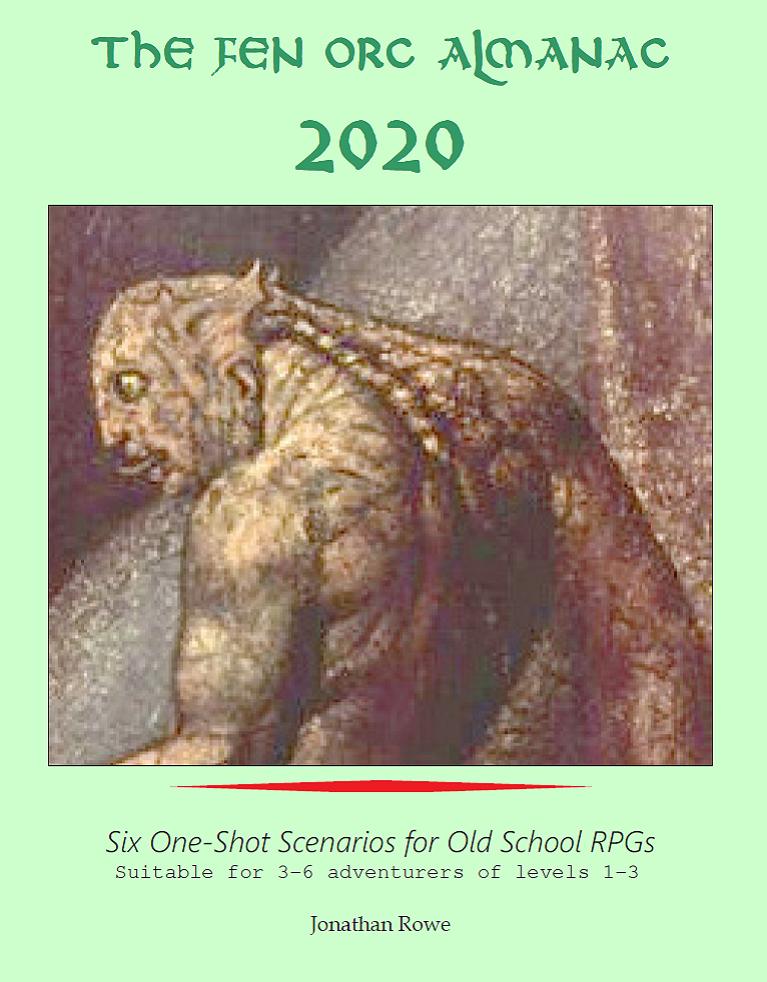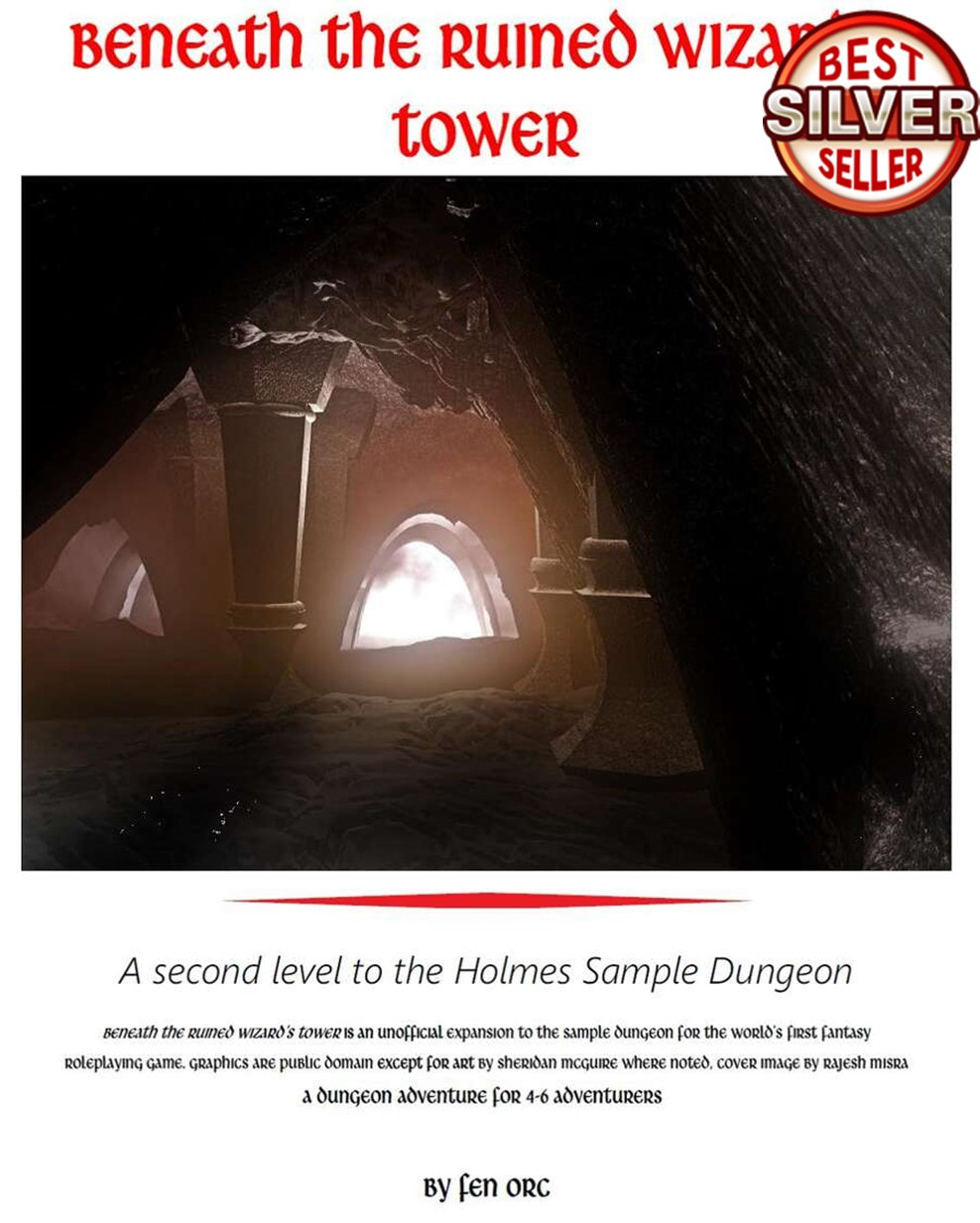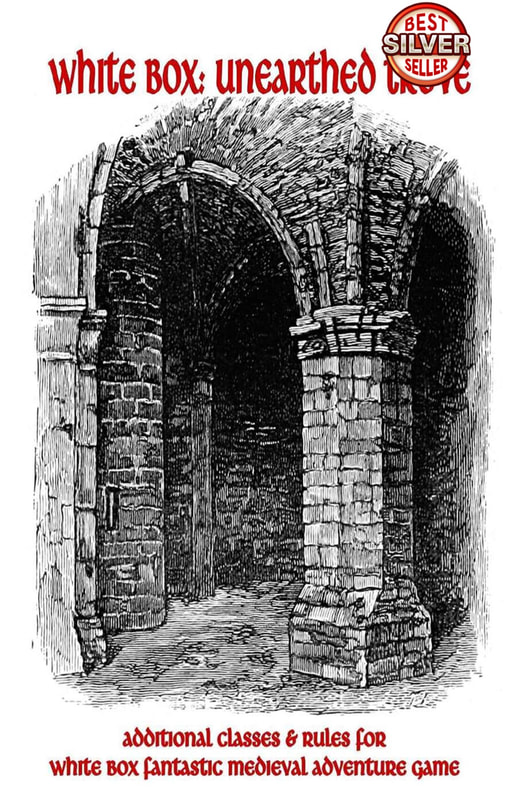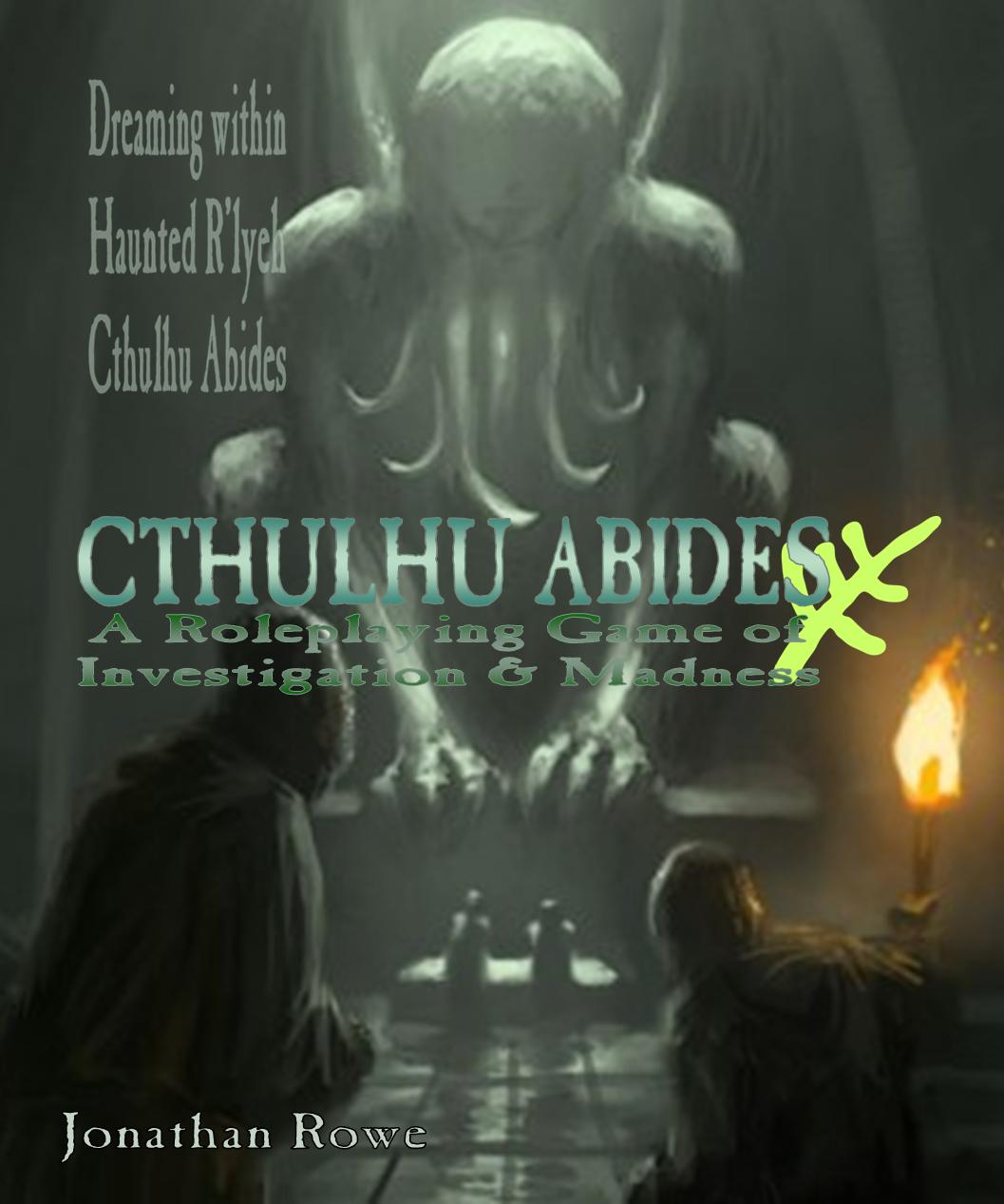|
One of the distinctions that divides fans of different editions of D&D is the question, 'How long is a melee round?' Some lexical detective work is needed to figure out what D&D originally intended. Back in 1974, Gary Gygax and Dave Arneson explain (in the Underworld & Wilderness Adventures expansion) that a 'turn' is ten minutes and there are 10 1-minute melee rounds in a turn. Gygax retained the 1-minute melee round for 1st and 2nd edition AD&D, justifying it like this: The 1 minute melee round assumes much activity – rushes, retreats, feints, parries, checks, and so on. Once during this period each combatant has the opportunity to get a real blow in (1st ed. AD&D Players Hand Book, p39) The 1-minute round seems to have its roots in the wargaming superstructure that D&D emerged from. One minute allows a squad or battalion to move, line up, fire, generally 'take their turn'. Combat in wargaming is typically all-or-nothing, so in that 1-minute of action you might completely eliminate your opponent. Adapting this to tabletop RPGs produces a high level of abstraction. You're free to imagine a lot of cinematic business going on surrounding your solitary 'to hit' roll or spell. But it leads to absurdities. An armoured warrior can only manage short bursts of energetic combat, but combat in D&D can easily last 10+ melee rounds, especially in a 'cleric fight' (a fight between well-armoured characters with low damage output). That's 10+ minutes of huffing and puffing in quilted doublets, thick leather jerkins, mail hauberks... Impossible. While Gygax was working in minutes, Eric Holmes was tasked with presenting Basic D&D (1977) and unilaterally decided that the time frame for combat should be in seconds rather than minutes: Each turn is ten minutes except during combat where there are ten melee rounds per turn, each round lasting ten seconds (Basic D&D Blue Book, p9) Now that ten round fight lasts just under two minutes: much more realistic. Subsequent editions of Basic D&D - the 1981 beautiful edition by Tom Moldvay and the 1983 ugly edition by Frank Mentzer - retain this 10-second melee round. Moreover, Basic D&D charted the path that other RPGs followed. For example, Runequest defines fantasy roleplaying for non-D&D folk and hit upon a 12-second melee round. The melee round is 12 seconds long. One complete round of attacks, parries, spells, and movement happens during ascenario. (Runequest 2nd ed, p14) 12 seconds is long enough for it to eat your shield Then, in the 21st century, 3rd edition D&D switches to the 6-second melee round, which has been the standard ever since. Take that, Gygax. Holmes is vindicated! A round represents about 6 seconds in the game world. During a round, each participant takes a turn (5th ed. D&D Players Hand Book, p189) There are arguments to make both for the combat round as minute or handful of seconds. The 1-minute-round moves combat towards 'theatre of the mind' with a lot of improvised 'business' going on around the decisive blows. Tasks like picking up weapons, unsheathing swords, notching arrows, drinking potions and finding spell components are easy to fit into this stream of activity and don't penalise the character. But if you find such protracted combat unlikely, the 6/10-second-round offers a more moment-by-moment approach that suits tactical combat better, where facing and flanking matters; where you forfeit your action if you're caught unawares, if you have to ready your weapon; where it matters where you are standing and who you can see and whether you can reach somebody in time to hit them. But is it really likely that an armoured warrior can hit someone 6-10 times in a minute - or even twice that if they are high-level? Can archers really fire 12-20 arrows a minute, minute after minute? Can you really cast 6-10 spells in a minute, with combat going on all around you? The fast melee round seems to credit PCs with incredible vigour. Real Life Comparisons A medieval longbowman at the Battle of Crecy (1346) was expected to fire 12 shots a minute. That involves drawing and firing a longbow, which most people would find pretty punishing to do just the once. On the other hand, it didn't involve much aiming: longbows work because they drop a swarm of yard-long steel skewers onto the enemy, willy-nilly. And of course, this could not be sustained for more than a few minutes. A shortbow might be fired 20-30 times a minute, but, again, no one could sustain this. All of which favours the 10-second melee round more than the 6-second one, which allows a bow to be fired up to a dozen times. Moreover, how many arrows actually get fired in a 1-minute round? If the round assumes lots of 'shots' which only pin the opponent down or harry them, but include a couple of 'true' or 'effective' shots that have "the opportunity to get a real blow in", it's reasonable to assume an archer fires at least half a dozen arrows per minute, probably twice that. An archer with a quiver of 20 arrows will have fired all of the after a couple of 1-minute melee rounds. Jogging speeds in minutes and seconds Usain Bolt's world record is to run 100m in 9.58 seconds. That's about 200ft in 6 seconds or 330ft in 10 seconds. The average jogger covers 70ft in 6 seconds or 120ft in 10 seconds or a whopping 730ft in a minute. Now if we halve that 'jogging speed' for someone running in heavy clothing, carrying adventuring gear, in a darkly lit tunnel, over uneven and slippery floor, you probably get 35ft in a 6-second melee round or 60ft in a 10-second round and let's say 360ft in a minute. But it's even worse in heavy armour, carrying a sword, trying not to get killed. Even if we assume adventurers are trained to run around in armour, 35/60/360ft per round has to be the maximum and a more likely distance is 20ft in 6 seconds or 30ft in 10 seconds and 180ft in a minute, which is walking speed. 1st Edition AD&D (PHB p102) allows unarmoured characters to travel 120ft in a 1-minute round, which suggests a very cautious sort of walk. Halve that for characters in metal armour, which is a weary shuffle. D&D 5th edition has an unencumbered human traveling 60ft in a 6-second round, which is rather speedy, more like an actual jog along a smooth pavement. Basic D&D (Molvay or Mentzer) has unencumbered characters jogging 40ft in a 10-second round and lumbering 20ft in metal armour, which is comparable to AD&D speeds. Holmes Basic D&D allows 20ft movement in a melee round, 10ft if armoured, which is almost immobile by comparison. One of the less-remarked aspects of the development of D&D through the editions is how much faster everyone is now. A combat minute in Forge Out Of Chaos Indie RPG Forge confesses its derivation from D&D (especially 1st edition AD&D) in myriad ways, but its adoption of the 1-minute melee round is one of the clearest. After all, who would come up with such a profoundly un-intuitive gaming convention on their own? But Forge imports some ideas from other RPGs that sit uneasily with the abstract 'melee minute'. For example: armour. D&D treats armour as an impediment to hitting which works fine in a melee minute, where it's assumed your opponent takes lots of swipes against you and armour merely shifts the odds of being hurt in your favour. In 1978, Runequest took another direction, with armour deducting from dealt damage, which works well with its more simulationist 12-second round, in which combatants deal each other single bone-crunching blows. Forge tries to have it both ways. Armour makes you harder to hit (in an abstract, when-you-average-it-all-up sort of way) but also absorbs the damage dealt (in a specific that-blow-didn't-get-through sort of way). However, Forge usually inhabits the theatre-of-the-mind world of AD&D combat, where miniatures and battle maps are optional because positioning and facing barely matter. In Forge, you're either attacking an enemy's DV1 (including shield and Awareness bonus) or DV2 (no shield, no Awareness bonus) and there's nothing more specific than that. At least AD&D perversely factored in whether you were making a flank attack on someones shield-side or not (forgetting, temporarily, the rushes, retreats, feints, parries, checks, and so on of a melee-minute). But then Forge also forgets its melee-minute time frame when it obsesses about the range of magic spells and invites you to 'pump' spells to increase the range. Who cares what the range is when the spell is being cast in a busy minute in which you can dash over 100ft to get close to someone? Back in Holmes Basic, when a Magic-User might jog 20ft and an armoured Elf lumber 10ft, spell range mattered. Forge bases movement on the Speed (SPD) characteristic, determined for PCs using 1d4+1 (2-5). 'Yards' is an oddity: all the spell ranges are in feet. It's probably an unedited error and I'm always happy to enforce the convention that yards apply outside the dungeon but once you're underground, all yards count as feet. Forge also lacks any rules for encumbrance (but I offer house rules), so we have to assume these distances apply to unarmoured, unencumbered characters. If SPD 3 is the human norm, then adventurers are moving around much faster than in AD&D. If we apply AD&D logic, then characters in non-metal armour lurch about at 3/4 this speed and metal armour in 1/2 this speed. Nonetheless, if you've got SPD 5 then, even in plate mail, you will cover an impressive 170ft in a melee minute, much faster than AD&D. (I'm not even going to get into the whole conceptual muddle about whether SPD is supposed to represent reflexes or brute strength, the latter of which matters more for hauling yourself across a combat zone in armour.) If you can cover this sort of distance in a melee-minute, you don't worry too much about the range requirements of bows (which Forge also dispenses with) or spells. You just jog until you're close enough to your opponent and ZAP! Does anybody use melee-minutes any more? Gary Gygax ported the concept of the melee-minute into AD&D and Forge cloned it in an unreflective moment, but neither game really gets to grips with the implications. Gygax links his melee-minutes to another of D&D's defining concepts: Hit Points. What does it mean for a high level character to amass Hit Points sufficient to endure any number of sword blows? They haven't increased in literal physical toughness, but rather such areas as skill in combat and similar life-or-death situations, the "sixth sense" which warns the individual of some otherwise unforeseen events, sheer luck and the fantastic provisions of magical protections and/or divine protection (Dungeon Master's Guide, p82) In other words, some 'hits' in combat aren't even 'hits' at all. They're like the lost lives of a cat. The axe whistles through the space where your head was a moment ago, but some instinct made you duck. You lose Hit Points, representing pushing your luck, but you're physically unharmed. Yet, in another mood, Gygax is devoting pages in the Dungeon Master's Guide (e.g. pp52-3, 64, 69) to tactical movement, as if he were offering rules to a skirmish game with the action paced out in heartbeats, forgetting that all this is redundant in a rules set where, each minute, characters move great distances ("rushes, retreats") and the 'to hit' roll represents shaving away your opponent's luck rather than actually stabbing them. You can see why later editions of D&D followed Holmes down the heartbeat route of melee-moments rather than melee-minutes. Yet it leaves D&D with the preposterous institution of Hit Points, now bereft of its only justification, that a damaging 'hit' in combat doesn't necessarily involve any physical contact. If D&D can't square the circle of melee-time, then I can't 'fix' Forge's hybrid concoction either. In Forge, Hit Points are calculated from Stamina and don't balloon as you gain experience: a 'hit' in Forge is clearly something that leaves cuts and bruises. You use binding kits to regain your Hit Points, which you wouldn't do if all you'd lost was some good luck. In Forge, armour absorbs damage: if the armour deteriorates, then surely the axe did hit you! The long melee-minute loses its rationale. If I convert to the 'melee moment' approach - and I like the feel of Holmes' 10-second melee round - then all of Forge's spells last way too long and there's no point in 'pumping' them for extra duration (although extra range might become relevant again since unarmoured SPD 3 characters would only move 60ft per round or 30ft in plate mail). We can at least be consistent about the melee-minute approach. There doesn't seem to be anything to be done about the weirdness of two-handed swords which get swung once every two minutes. The convention comes from Holmes, with his snapshot 10-second rounds. Gygax did away with it in a moment of lucidity, but Forge ports it straight back in because it's really hard to make yourself remember that your melee rounds last an entire minute! Keeping track of arrows fired during a melee-minute seems irrational. In that space of time, an archer will fire almost all her arrows, then gather up the fallen ones to fire again. To represent depletion, just house rule that the archer's quiver goes down by 1d6 arrows every round, representing shafts that cannot be easily recovered. Then, at the end of the battle, the archer gathers them all back, minus a few lost or broken ones (perhaps, reducing the total stock by 1d6). In this sort of time frame, combatants can reach just about any area of the battlefield that their (rather large) movement allowance permits. Forge is onto something by treating tactical positioning as a simple DV1 (they saw you coming) vs DV2 (they didn't, or they're engaged in combat with somebody else). Place your miniature wherever you want to be on the battle map at the start of each melee minute. Or dispense with miniatures altogether! OSR dungeoncrawling without miniatures? I think I'd better think it out again...
0 Comments
Leave a Reply. |
30 Minute Dungeons
Essays on Forge
FORGE Reviews
OSR REVIEWS
White Box
THROUGH THE Hedgerow
Fen Orc
I'm a teacher and a writer and I love board games and RPGs. I got into D&D back in the '70s with Eric Holmes' 'Blue Book' set and I've started writing my own OSR-inspired games - as well as fantasy and supernatural fiction.. Archives
July 2024
Categories
All
|

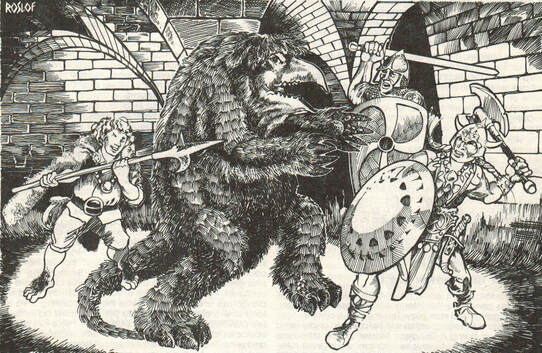
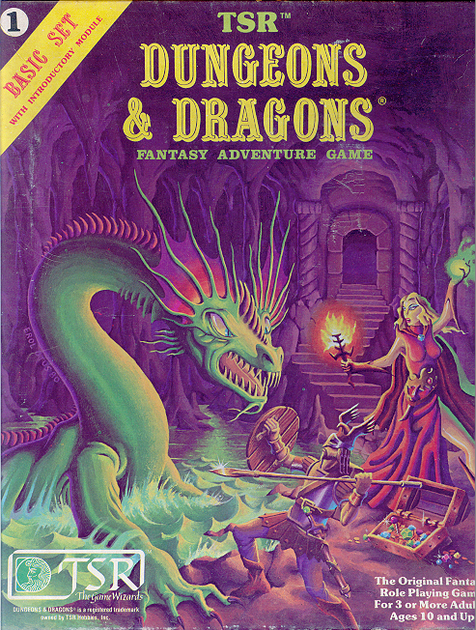
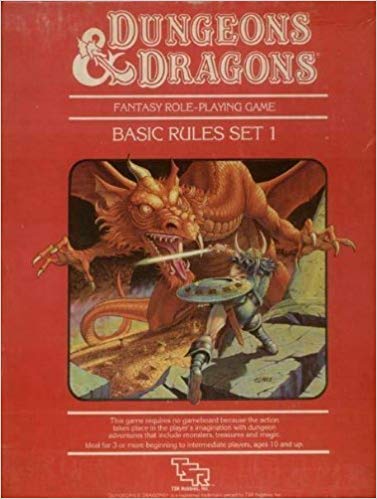
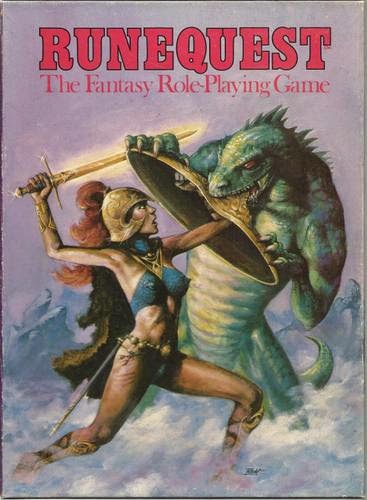
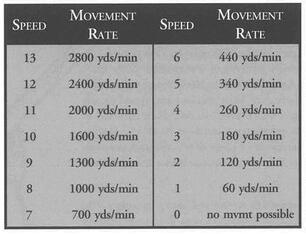

 RSS Feed
RSS Feed
